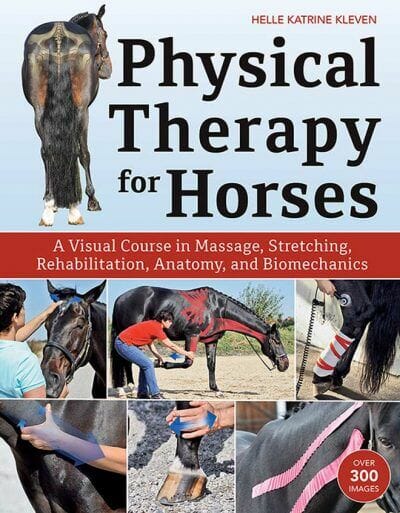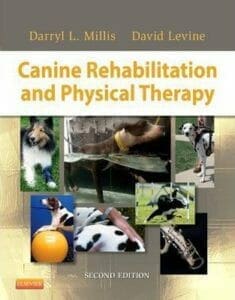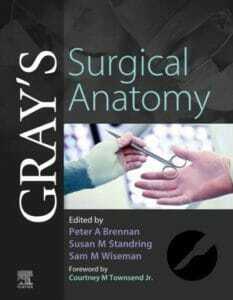Foreword by Bettina Hoy
Foreword (for 4th Edition) by Victoria Max-Theurer
Preface
1. Introduction to Physical Therapy for Horses
Why the Current Trend Toward Physical Therapy?
When and Where Can Physical Therapy Be Applied?
Back and Neck Problems
Unnatural Head and Tail Carriage
Stiff or Blocked Joints
Instability in the Body
Tendon, Ligament, and Muscle Injuries
Muscular Atrophy and Hypertrophy
Organ Dysfunction
Teeth Problems
Wound and Scar Tissue
“Mystery” Lameness
General Difficulties Under Saddle
Long-Term Stiffness
Resistance
Decline in Performance
Headshaking
Playing with the Tongue and Grinding the Teeth
Uneven Rhythm
What Causes Injury and Tension?
Trauma
Hoof Conformation and Shoeing
Tack and Equipment
Overstressing
Stabling Conditions
Inadequate Warm-Up and Cool-Down
Incorrect Riding
The Goal of Physical Therapy: What Can Physical Therapy Accomplish?
Improving Circulation and Metabolism
Avoiding/Releasing Adhesions
Promoting Relaxation
Relieving Pain
Restoring Mobility
Restoring Performance Capability
Prevention
2. The Anatomy of the Musculoskeletal System
The “Passive” Musculoskeletal System
Bones
Joints
Clicking Joints
The Skeleton
The “Active” Musculoskeletal System
Joint Capsules
Ligaments
Muscles
Muscle Development
Muscles and Tendons
Connective Tissue/Fascia
How the Fascia Works
Muscle Function
Types of Muscle Fiber
Types of Muscle Contractions
Stress Limits
Sore Muscles
Muscle Tone (Basic Engagement)
Muscular Interplay
3. Biomechanics
The Head
Skull Movement (Cranial Rhythmic Impulse—CRI)
Jaw Joint
Hyoid (Tongue) Bone
The Spine
The Curve of the Spine
The Nuchal Ligament
The Horse’s Carrying Ability
The Movement of the Spinal Column
The Muscles of the Spinal Column
The Deep, Short Muscles of the Spinal Column
The Large, Long Muscles of the Spinal Column
Abdominal Muscles
Loin Muscles
A Blockage in the Spinal Column
Cervical Vertebrae
The Poll
Biomechanics of the Poll
The Poll Muscles
Blockages in the Poll
The Cervical Vertebrae (C3–C7)
Biomechanics of the Neck
The Neck Muscles
Head and Neck Extensors (Lifting)
Head and Neck Flexors (Lowering)
Blockages in the Neck
Thoracic Spine and Breastbone
Biomechanics of the Thoracic Spine
Muscles of the Thoracic Spine and Breastbone
Blockages in the Thoracic Spine
The Lumbar Spine
Biomechanics of the Lumbar Spine
Musculature of the Lumbar Spine
Disorders of the Lumbar Spine
The Limbs
The Hindquarters
The Sacroiliac Joint
Biomechanics of the Sacroiliac Joint
The Sacrum
The Pelvis
Disorders of the Sacroiliac Joint
The Hip Joint
Hip Joint Biomechanics
Disorders of the Hip Joint
The Stifle Joint
Biomechanics of the Stifle
Disorders of the Stifle Joint
The Hock
Biomechanics of the Hock
Disorders of the Hock
The Joints of the Lower Limb
The Musculature of the Hindquarters
Muscles That Move the Hind Leg Forward
Muscles That Move the Hind Leg Back
The Inner Upper Thigh Muscles (Adductors)
The Forehand
Biomechanics of the Forehand
Upper Forehand
Shoulder Blade
Shoulder Joint
Elbow Joint
Muscles of the Upper Forehand
Muscles That Suspend the Trunk
Muscles That Suspend the Limbs
Muscles That Move the Limbs Forward
Muscles That Move the Limbs Backward
The Lower Forehand
Knee Joint
Joints of the Lower Limb
Musculature of the Lower Limb
Flexors of the Lower Limb
Extensors of the Lower Limb
4. The Nervous System
The Anatomy of the Nervous System
The Central Nervous System
The Peripheral Nervous System
The Sensory Neurons
The Motor Neurons
Proprioceptive Receptors (Positional Reflexes)
The Autonomic Nervous System
The Sympathetic Nervous System
The Parasympathetic Nervous System
The Nervous System and Movement
5. Observation
General Inspection While Standing
Detailed Inspection While Standing
Observing from the Front
From the Side at a Standstill
From the Back at a Standstill
From Above at a Standstill
In Movement
The Hindquarters at the Walk
The Forehand at the Walk
From the Side at the Walk
Through Tight Turns at Walk
While Backing Up
Observing at Trot
At Trot on the Longe
At Canter on the Longe
Observing Under Saddle
6. Palpation
Practice on the Horse
How Hard Should You Press?
Techniques to Palpate the Horse
Triggering Pain
How Should a Relaxed Muscle Feel?
Let’s Get Started!
7. Massage—The Art of Healing with Your Hands
The Effects of Massage
Where Should You Massage?
What Tools Should You Use?
How Hard Should You Press?
How Often Should You Massage?
How Long Should a Massage Last?
When to Massage—Before or After Work?
The First Time!
Pain or Discomfort
Are Side Effects Possible?
When Shouldn’t You Give a Massage?
Massage in Practice
Choosing Your Technique
1. Long Strokes
2. Long Strokes with the Fingers
3. Compression
4. Kneading
5. Twisting
6. Direct Pressure
7. Circling
8. Shaking/Vibration
9. Knocking/Chopping
Special Massages
The Head
The Limbs
The Longissimus Dorsi and Abdominal Muscles
8. Mobilizing and Stretching
What Causes Shortening of Soft Tissue?
Mobilization
Active Stretching
Passive Stretching
The Stretching Reflex
When Should I Mobilize/Stretch?
How Often Should I Mobilize/Stretch?
How Long Should I Mobilize/Stretch?
When Not to Mobilize/Stretch?
What Should Be Avoided When Mobilizing/Stretching?
Are There Side Effects?
Implementation
A Hint for You!
The Effects of Mobilizing and Stretching
Exercises for Mobilization and Stretching
Mobilizing Exercises
Mobilizing the Forelimbs
Mobilizing the Hind Limbs
Mobilizing the Jaw
Mobilizing the Spine
Mobilizing the Head, Poll, and Neck in Flexion
Mobilizing the Head, Poll, and Neck in Longitudinal Bend
Mobilizing the Head, Poll, and Neck in Extension
Mobilizing the Thoracic and Lumbar Spine While Lifting
Lifting the Back
Lifting the Withers
Mobilizing the Thoracic and Lumbar Spine While Lifting
Mobilizing the Thoracic and Lumbar Spine in Extension
Mobilizing the Tail
Stretching Exercises
Stretching the Forelegs
Stretching the Forelegs to the Front
Stretching the Forelegs to the Back
Stretching the Forelegs to the Outside
Stretching the Forelegs Forward and Across
Stretching the Forelegs Back and Across
Stretching the Hind Limbs
Stretching the Hind Limbs Forward
Stretching the Hind Limbs to the Back
Crossing the Hind Limbs Under the Belly
Stretching the Hind Limbs to the Outside
Stretching the Tail Back
9. Stabilization and Strengthening
What is Physical Stability?
What Causes Instability?
When to Stabilize
How Often and for How Long?
When Shouldn’t Strengthening Exercises Be Applied?
Exercises for Stabilizing and Strengthening
Stabilizing the Forehand
Lifting the Withers
Shifting Weight to the Forehand
Stabilizing the Hindquarters
Strengthening the Abdominal and Upper Thigh Muscles
Pulling the Tail
Shifting Weight to the Hindquarters
10. Physical Therapy
Ice Therapy
Hydrotherapy
Heat Therapy
Fango
Hot Rolls
Solarium Therapy
Matrix-Rhythm Therapy
Magnetic Therapy
Laser Therapy
Ultrasound Therapy
Electric Muscle Stimulation
TENS (Transcutaneous Electrical Nerve Stimulation)
Medium-Frequency Electrotherapy
Kinesiology Tape
11. Rehabilitation
Passive Rehabilitation
Active Rehabilitation
The Plan
Purposeful Rehabilitation
Methods for Active Rehabilitation
Equibands®
Longeing
Double Longeing/Long-Lining
Round-Penning
Horse Walker
Treadmill
Riding
12. Preventive Measures
Tying
Saddle Fit
Saddle Test
Saddle Pads
The Girth
Bridle Fit
Auxiliary Reins
What Happens When You Ride with Draw Reins?
Auxiliary Reins for Support
Teeth
Shoeing
Mounting
Warming Up
Cooling Down
Anatomy Tables (Skeletal and Muscular)
Glossary
Acknowledgments
Index














![Ettinger’s Textbook of Veterinary Internal Medicine 9th Edition [PDF+Videos] Ettinger’s Textbook of Veterinary Internal Medicine 9th Edition [True PDF+Videos]](https://www.vet-ebooks.com/wp-content/uploads/2024/10/ettingers-textbook-of-veterinary-internal-medicine-9th-edition-100x70.jpg)

![Textbook of Veterinary Diagnostic Radiology 8th Edition [PDF+Videos+Quizzes] Thrall’s Textbook of Veterinary Diagnostic Radiology, 8th edition PDF](https://www.vet-ebooks.com/wp-content/uploads/2019/09/textbook-of-veterinary-diagnostic-radiology-8th-edition-100x70.jpg)






